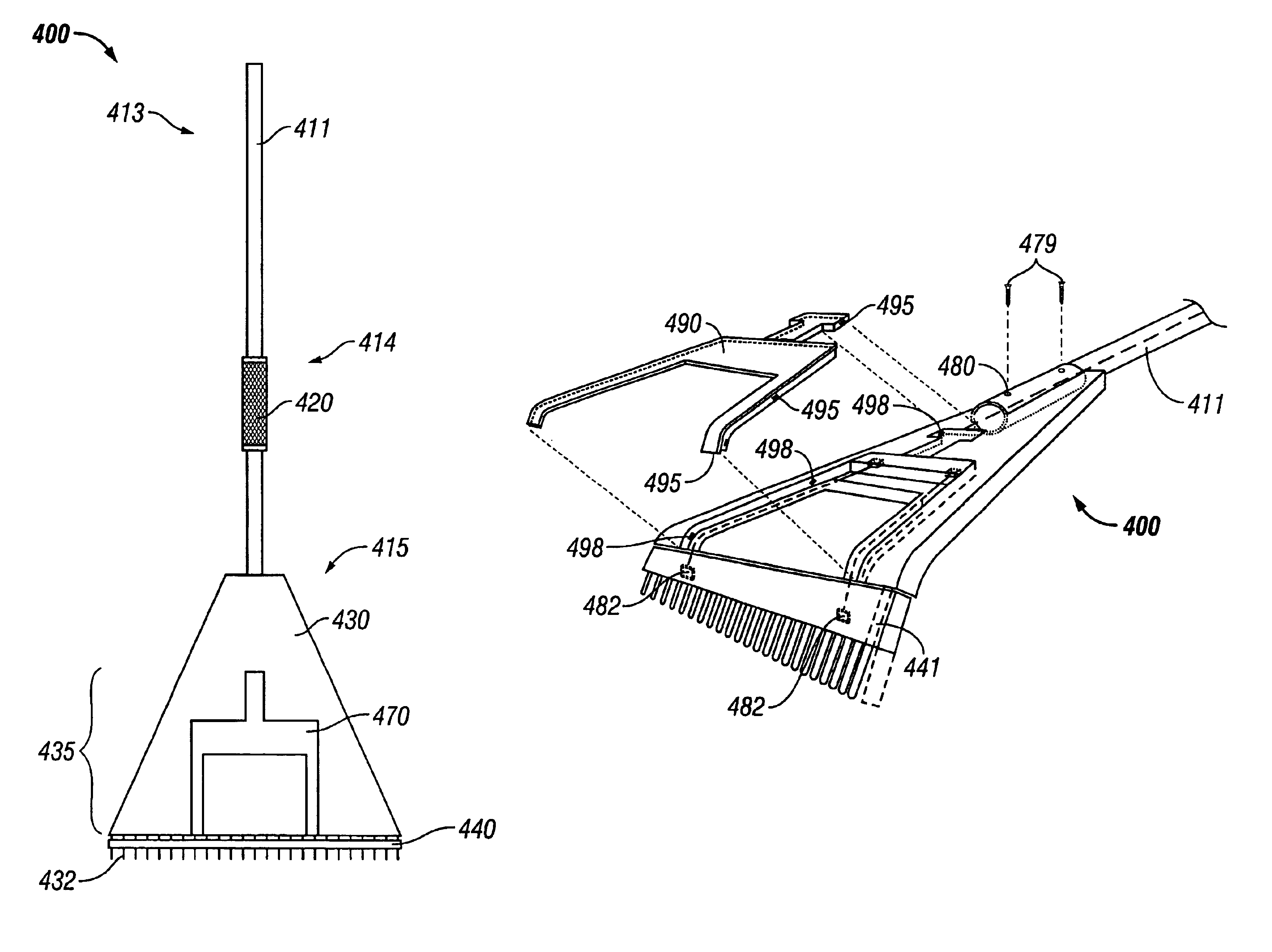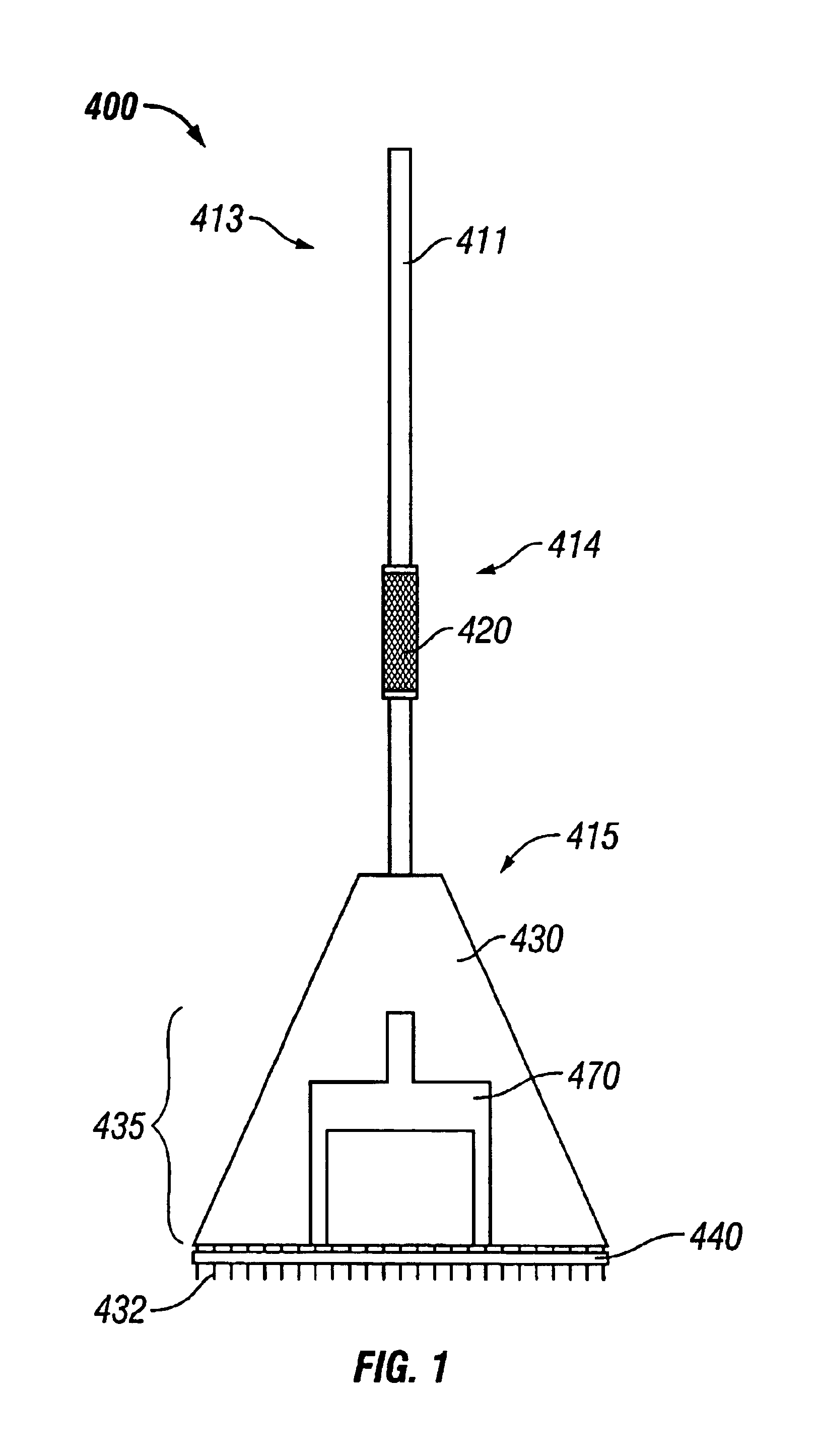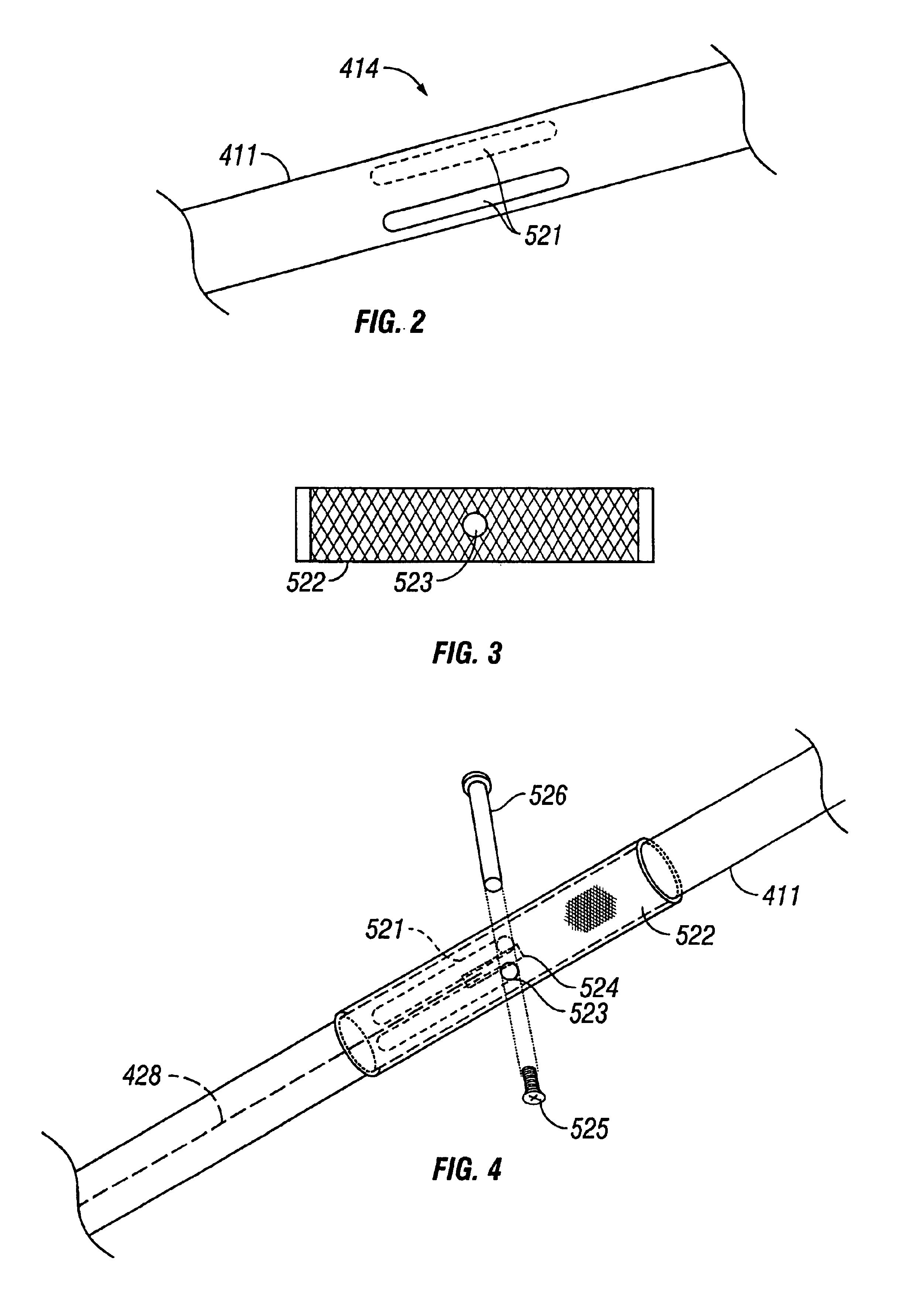Self-cleaning rake
a self-cleaning and rake technology, applied in the field of rakes, can solve the problems of increasing the risk of cleaning mechanism failure, failure of cleaning process, and continuous trapping of leaves and other yard debris in the tines of the rak
- Summary
- Abstract
- Description
- Claims
- Application Information
AI Technical Summary
Benefits of technology
Problems solved by technology
Method used
Image
Examples
Embodiment Construction
” one will understand how the features of the system and methods provide several advantages over traditional systems and methods.
In one embodiment, the self-cleaning rake comprises an elongated handle having a rake end, a handle end and a middle portion, a body lying generally in one plane and having an attachment end that is attached to the rake end of the handle. A tine end is located opposite the attachment end and a central portion is disposed between the attachment end and the tine end. A plurality of tines extend from and are fixed to the tine end of the body. An actuator bar channel is formed in the central portion of the body comprising a pair of major sides and a pair of minor sides, and an actuator bar is disposed within the actuator bar channel and extends generally parallel to the tine end of the body. A grip is disposed about the outside of the middle portion of the grip and adapted to slide along the handle. A push-rod having first and second ends is disposed along the...
PUM
 Login to View More
Login to View More Abstract
Description
Claims
Application Information
 Login to View More
Login to View More - R&D
- Intellectual Property
- Life Sciences
- Materials
- Tech Scout
- Unparalleled Data Quality
- Higher Quality Content
- 60% Fewer Hallucinations
Browse by: Latest US Patents, China's latest patents, Technical Efficacy Thesaurus, Application Domain, Technology Topic, Popular Technical Reports.
© 2025 PatSnap. All rights reserved.Legal|Privacy policy|Modern Slavery Act Transparency Statement|Sitemap|About US| Contact US: help@patsnap.com



